Ball valves for heating: structural features, installation
Any heating system consists of a number of different nodes, designed to perform certain tasks. But it is the valves for heating that are the most important components of the system, since with their help the flow of coolant is controlled.
A wide assortment of various valves is represented on the market, which is characterized by throughput, bore diameter, nominal and maximum allowable pressure, manufacturing material, etc. What to choose among the variety of solutions on the market?

Structural differences of ball-type locking mechanisms
Ball (needle) valves get their name in accordance with the shape of the valve, which is a ball with a through hole.
The instruction manual of the device is simple:
- Due to the rotation around its axis, the through hole on the ball coincides with the holes on the body through which the coolant passes.
- Additional rotation of the valve leads to the fact that the holes through which the coolant passes do not coincide and the flow stops.
Thus, the ball valve for heating has two main working positions, namely, “closed” and “open”. Intermediate positions at which the head is loosened, as a rule, are not provided.
According to the through hole configuration, the following types are distinguished:
- simple modifications with a straight hole;
- three-way modification with an L-shaped hole;
- three-way modifications with a T-shaped opening.
Important: To disconnect the battery from the heating system, as a stop valve, most often, modifications with a straight hole are used.
In accordance with the type of connection valves are of the following types:
- Flanged valves - it is applied both in household, and in industrial systems. Flanged valves are reliable and durable, and therefore designed for long-term operation in systems with high pressure.
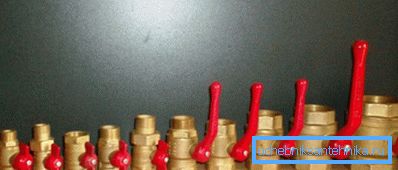
- Coupling fittings used in domestic heating. These devices are called because of the design features of the mount.
Coupling cranes are selected for a specific heating system based on the parameters of throughput and the maximum working pressure in the network.
In accordance with the capacity, ball valves are divided into the following modifications:
- standard devices are characterized by a bandwidth of up to 80%;
- full bore devices open completely and practically do not interfere with the flow of coolant.
Important: In household heating systems, to ensure maximum heat transfer from radiators, it is advisable to install full bore stop valves. Such devices in the open form will not impede the progress of the coolant.
Selection according to the type of production materials
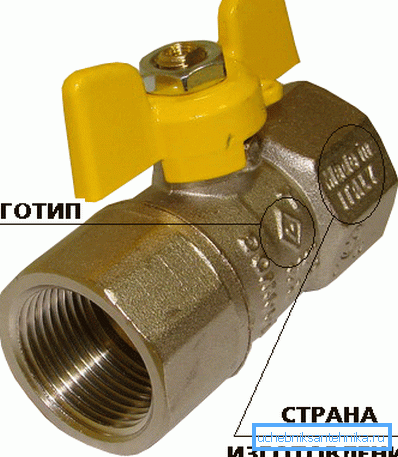
A needle valve for heating is selected not only on the basis of the characteristics and parameters of a particular system, but also in accordance with the type of production materials.
The following varieties are on the market today:
- Modifications with a casing made of steel - are characterized by high strength, withstand substantial mechanical loads, but are distinguished by low corrosion resistance.
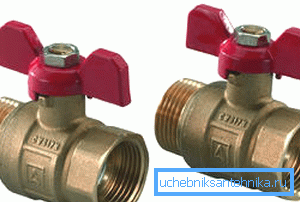
- Brass or bronze modifications - different plasticity and, as a result, resistance to mechanical loads. In addition, brass and boron products are resistant to corrosion, and therefore recommended for use in systems with excessive rigidity and aggressiveness of the coolant.
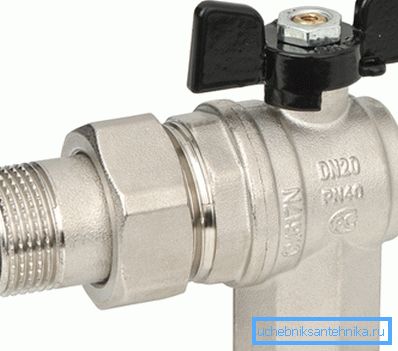
- Modifications from stainless steel on sale are extremely rare and expensive. The operational life of such structures is the longest of all the above products.
- Modifications made of silumin are implemented as a fake for brass or bronze valves. The price of such products is low, but they quickly fail.
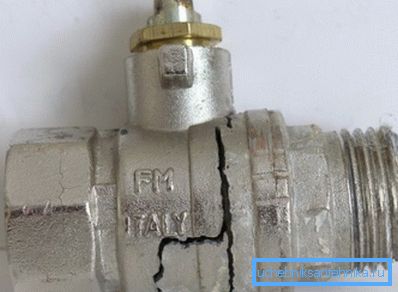
Silumin is a fragile material that literally crumbles from excessive mechanical stress and crumbles due to temperature changes.
It is not easy to distinguish silumin products from bronze, but it is possible. It is enough to make a deep scratch with a knife or file on the body of the crane.
If the scratch strip is yellow, then it is brass or bronze.
If the scratch band is white, then, most likely, the product is from silumin and should not be purchased.
- Modifications made from polymeric materials are a separate category of valves. Such taps are installed for heating, assembled from polypropylene pipes by welding.
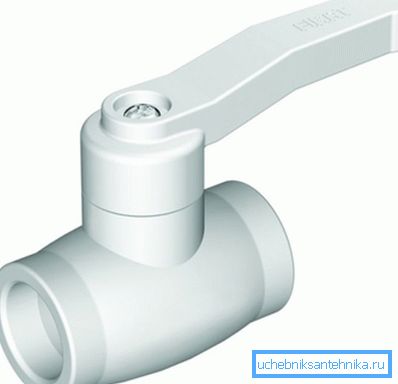
A characteristic difference between products made from polymeric materials is the size larger than the dimensions of the metal counterparts.
In terms of durability, polymer taps are practically not inferior to metal modifications, since they do not corrode. Typical examples of polymeric valves are valves with polypropylene casing.
How is the crane Mayevsky and what it is used

Mayevsky's crane is a ball type air vent. The purpose of the device is to release air and / or coolant at an overpressure in the system.
Traditionally Mayevsky's crane is installed in the upper side of the radiator, where it is screwed in as a plug. Structurally, the product is a small washer with thread on the edge. The metal core of the accessory is melted into a plastic case.
The valve is turned around its axis by means of a special socket wrench or with the help of a slotted screwdriver. Bleeding excess air through the side opening.
The instruction for air bleeding is nothing complicated:
- We insert a screwdriver into the groove or put a key on the shank.
- Doing your own hands one turn counterclockwise and we hear a hiss - it leaves the air.
- Bleed the air should be guided by the testimony of the pressure gauge on the heating equipment. When the pressure reaches the recommended level (for autonomous systems not more than 1.5-2 Bar), the valve is closed in a clockwise direction.

Important: Together with the excess air, the coolant can go out of the air vent, so you should unscrew the valve by holding a small container under it.
If in the process of assembling the heating system it turned out that there was no Mayevsky crane, you can get by installing a conventional ball valve.
But, this solution has several disadvantages:
- First, the usual tap will look cumbersome and not aesthetically pleasing.
- Secondly, the usual valves do not provide adequate comfort when bleeding air, since the outlet of such accessories is large.
Important: Mayevsky's crane is a mechanical type air vent that requires direct human participation in monitoring pressure parameters. Along with mechanical devices, there are automatic air vent valves on the market, which work themselves when the pressure in the system exceeds the permissible norm.
Conclusion
In the article we listed the main types of ball valves, as well as their structural and operational features. Now you can make the right decision about what kind of stop valves you may need to implement these or other heating systems (see also the article Repairing the Heating System - we care about the health of the heating system).
More useful information can be found by viewing the video in this article.